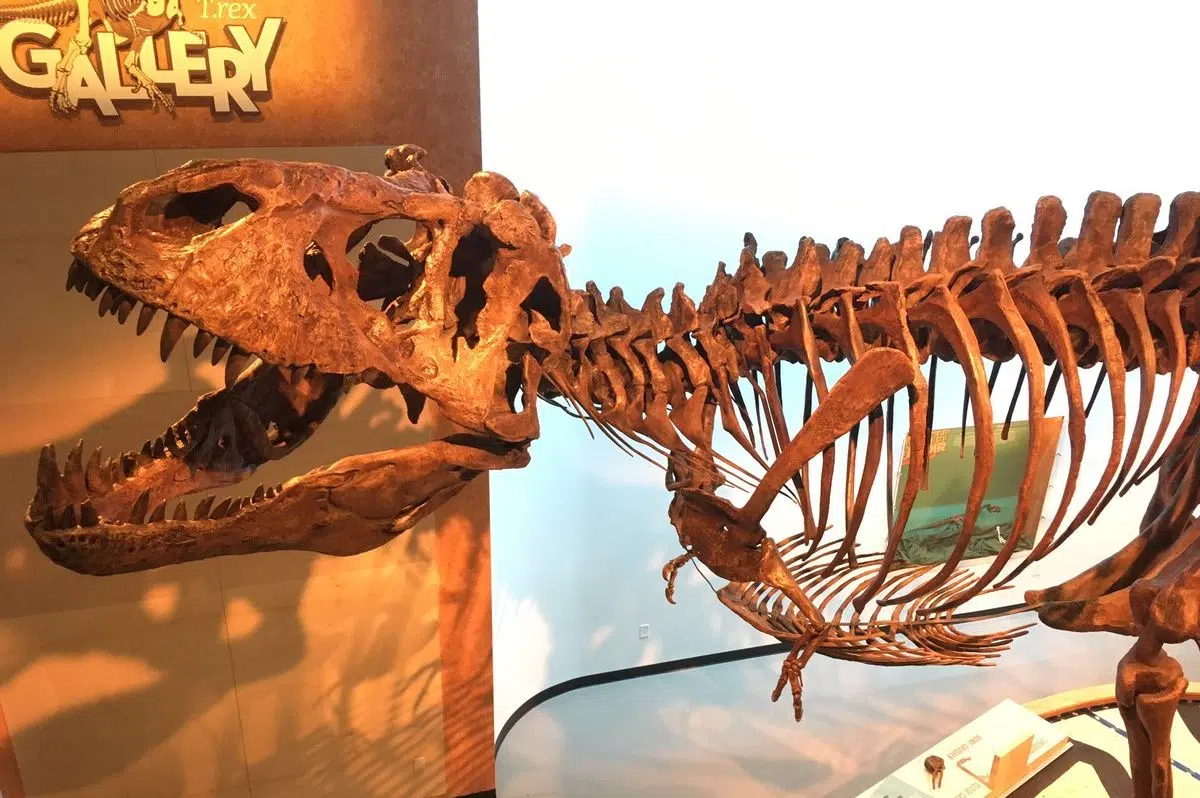It’s the biggest Tyrannosaurus rex ever discovered by paleontologists, and it caught the eyes of a major broadcaster south of the border.
Scotty, the massive T. rex whose fossils were found in the Frenchman River Valley near Eastend in the early ’90s, was featured on CBS’s This Morning show Wednesday at the Royal Saskatchewan Museum.
CBS sent a news crew, led by national reporter Jamie Yuccas and production members, to tell Scotty’s story.
“It’s the biggest, and we want to know who has the biggest,” producer Warren Serink said when asked why an American audience wants to know about Scotty.
Yuccas said it’s a dream to cover the story, especially because she fell in love with dinosaurs at a young age while growing up in Minnesota.

CBS national correspondent Jamie Yuccas, left, shoots a story about Scotty the T. rex at the Royal Saskatchewan Museum ahead of opening day on May 15, 2019. (Evan Radford/980 CJME)
“My parents both grew up in Chicago, and Sue has always been a really big deal at the Field Museum in Chicago. So we would go check that out in the summertime,” she said.
Sue previously had held the title of world’s biggest T. rex, until Scotty took it over.
Named after a bottle of scotch that was on hand when paleontologists first discovered the skeleton, Scotty trekked around Saskatchewan approximately 66 million years ago during the Cretaceous period.
Scientists don’t know its gender. It weighed an estimated 19,400 pounds (8,800 kilograms) and stretched as long as a school bus.
A cast display of the dinosaur can be seen by the public at the museum on Friday, when it’s to be unveiled.
Scotty arrives after decades of fossil excavation, preparation and study by paleontologists.
“Whenever you can say this is something from millions and millions of years ago, they’re all fascinating,” Yuccas said.
She said that, as a woman, it’s an important reminder for her that girls and young women can work with dinosaurs in paleontology, too.
“Growing up, (the movie) ‘A Land Before Time’ gave female dinosaurs a place. Up until that point, it was kind of like boys were into dinosaurs and girls were into other stuff … It started my fascination,” she said.
To that end, Yuccas said there’s still a lot more to learn and discover about Scotty and other dinosaurs.
“The fact with Scotty, they don’t know if it was a boy or a girl, I think that’s fascinating … We still as the human race have a lot to learn about history,” she said.







